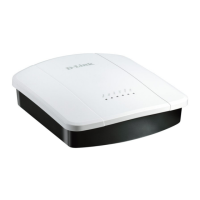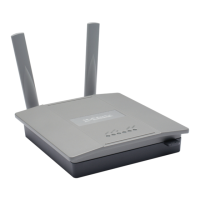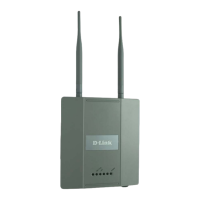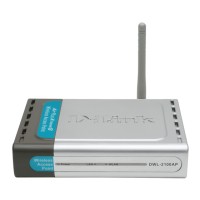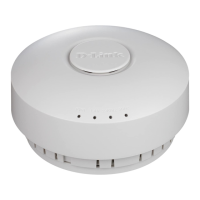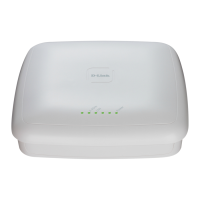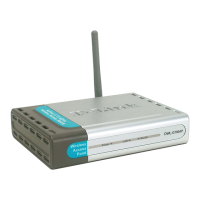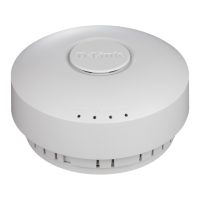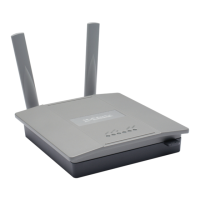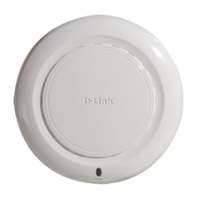D-Link UAP Software User Manual
12/10/09
Page 24 Configuring IEEE 802.1X Authentication 34CSFP6XXUAP-SWUM100-D13
In the following example, the administrator uses the CLI to set the management VLAN ID to 123 and to disable the untagged
VLAN so that all traffic is tagged with a VLAN ID.
D-Link-WLAN-AP# set management vlan-id 123
D-Link-WLAN-AP# set untagged-vlan status down
D-Link-WLAN-AP# get management
Property Value
------------------------------
vlan-id 123
interface brvlan123
static-ip 10.90.90.91
static-mask 255.0.0.0
ip 10.254.24.43
mask 255.255.248.0
mac 00:02:BC:00:14:E8
dhcp-status up
D-Link-WLAN-AP# get untagged-vlan
Property Value
---------------
vlan-id 1
status down
D-Link-WLAN-AP#
CONFIGURING IEEE 802.1X AUTHENTICATION
On networks that use IEEE 802.1X, port-based network access control, a supplicant (client) cannot gain access to the
network until the 802.1X authenticator grants access. If your network uses 802.1X, you must configure 802.1X authentication
information that the AP can supply to the authenticator.
If your network uses IEEE 802.1X see “Configuring 802.1X Authentication” on page 65 for information about how to configure
802.1X by using the Web interface.
USING THE CLI TO CONFIGURE 802.1X AUTHENTICATION INFORMATION
The following table shows the commands used to configure the 802.1X supplicant information using the CLI.
In the following example, the administrator enables the 802.1X supplicant and sets the user name to wlanAP and the
password to test1234.
Table 6: CLI Commands for the 802.1X Supplicant
Action Command
View 802.1X supplicant settings get dot1x-supplicant
Enable 802.1X supplicant set dot1x-supplicant status up
Disable 802.1X supplicant set dot1x-supplicant status down
Set the 802.1X user name set dot1x-supplicant user
<name>
Set the 802.1s password set dot1x-supplicant password
<password>
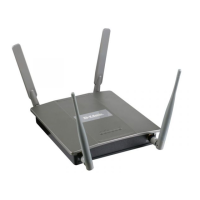
